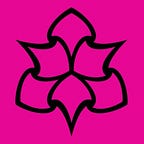The Important but also very Fascinating Oxford Dictionary of National Biography
Written by Sarah Webb, Senior Assistant Librarian at Crewe Library.
One of my favourite Library subscriptions is to the online Oxford Dictionary of National Biography (ODNB for short).
It’s described on the library website as offering:
‘Short biographies of people who shaped the history of the British Isles and beyond.’
It is an absolute must for researchers across many disciplines, or even just the curious who want to know something about British history. If you haven’t encountered the delights of the ODNB yet then you have thousands of hours of wonderful stories awaiting you at the click of your mouse.
The entries in the ODNB are informative, authoritative and written by academics and experts such as Patrick Collinson (Elizabeth I), Amanda Foreman (Georgiana, Duchess of Devonshire), June Purvis (Emmeline Pankhurst), and Manchester Met’s own Professor Dave Day (Agnes Alice Beckwith). They contain useful bibliographies to track further life sources.
Entries also include an image of the subject. That is unless they somehow avoided having their portrait taken or they are from very early history before reliable images were available.
The original Dictionary of National Biography was the brainchild of the Victorian publisher George Smith (1824–1901). He published Charlotte Brontë’s Jane Eyre and the first editor was Leslie Stephen (1832–1904), father of Virginia Woolf. According to Goldman (no date:online), the DNB became the Oxford Dictionary of National Biography when Oxford University Press took it over from Smith’s heirs in 1917.
Who was included in the original DNB is an interesting subject. The Victorian editors were praised for including ‘the odd, the wicked, the amoral, the deviant, or the lesser figure, and were ahead of their age in finding some areas such as sport worthy of historical enquiry and record’ (Baigent et al., 2005:2). However, as Goldman (no date:online), a previous editor of the ODNB said ‘The result was a skewed view of national history.’ For Baigent et al., (2005:2), that view of ‘the national life which they sought to epitomise in the DNB was male.’ If you were a woman and managed to squeeze your way into the DNB you were invariable a) white b) aristocratic and c) exceptional in some way (think Elizabeth the First, Elizabeth Fry or Emma, Lady Hamilton).
However, in recent decades there have been attempts to broaden out the kind of people included within this monumental work. In the 1990s, as Bourne (2017:online) remarked there were just 17 entries recording Black and Asian lives. Now for instance there are biographies of many more BAME lives such as the fascinating Dido Elizabeth Belle (1761–1804), Sara Forbes Bonetta (1843–1880), goddaughter of Queen Victoria and a princess of the Yoruba people, and the virtuoso violinist George Augustus Polgreen Bridgetower (1778- 1860). One of my favourite entries is that of the suffragette and human rights campaigner Princess Sophia Duleep Singh (1876–1948).
LGBTQ+ lives are there too and we have the painter Hannah Gluckstein known simply as Gluck (1895–1978). Rather endearingly, Gluck was able to paint and love freely because of a private income generated from her family’s Lyons’ Corner Houses (Art Deco tea shops). Gluck was a lover of the famous florist Constance Spry (1886–1960) who provide numerous displays for royal celebrations and inspiration for some of Gluck’s most famous paintings.
To make it more random and exciting there’s a Life of the Day. Here you encounter a different person’s life each day and probably people you’ve never read about before. There are also bi-monthly podcasts on such subjects as ‘Harry Patch, First World War veteran’ and ‘Edith Cavell, nurse and war heroine’. If that isn’t enough then why not try out the thematic arrangements. Under Reference groups there are groups, clubs, factions and movements such as the Pre-Raphaelite Brotherhood. In the ODNB’s Reference lists there is a wide range of lists, from Health ministers and Archbishops to captains of the England cricket team. It is all endlessly fascinating.
These are only some of the many rich resources on offer from the ODNB so thank you to all the people behind this invaluable resource.
References
Baigent, E., Brewer, C. and Larminie, V. (2005) Gender in the archive: women in the ‘Oxford Dictionary of National Biography’ and the ‘Oxford English Dictionary’. Examining the OED. [Online] [Accessed on 1st February 2019] http://oed.hertford.ox.ac.uk/main/images/stories/articles/baigent2005.pdf
Bourne, S. (2017) ‘Tackling lack of ethnic diversity in the Oxford Dictionary of National Biography.’ [Letter] The Guardian. [Online] 16th January. [Accessed on 4th February 2019] https://www.theguardian.com/books/2017/jan/16/tackling-lack-of-ethnic-diversity-in-the-oxford-dictionary-of-national-biography
Goldman, L. (no date) Making histories: the Oxford Dictionary of National Biography. Institute of Historical Research. [Online] [Accessed on 31th January 2019] https://www.history.ac.uk/makinghistory/resources/articles/ODNB.html
